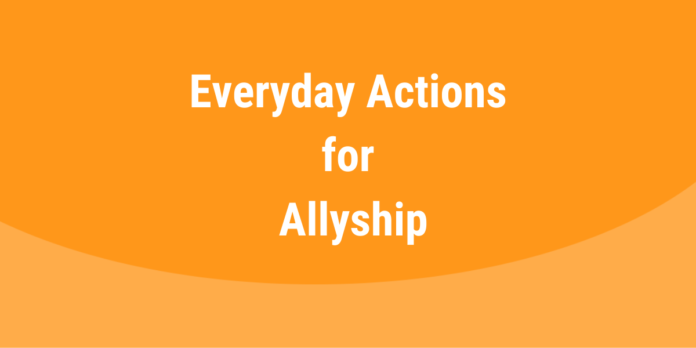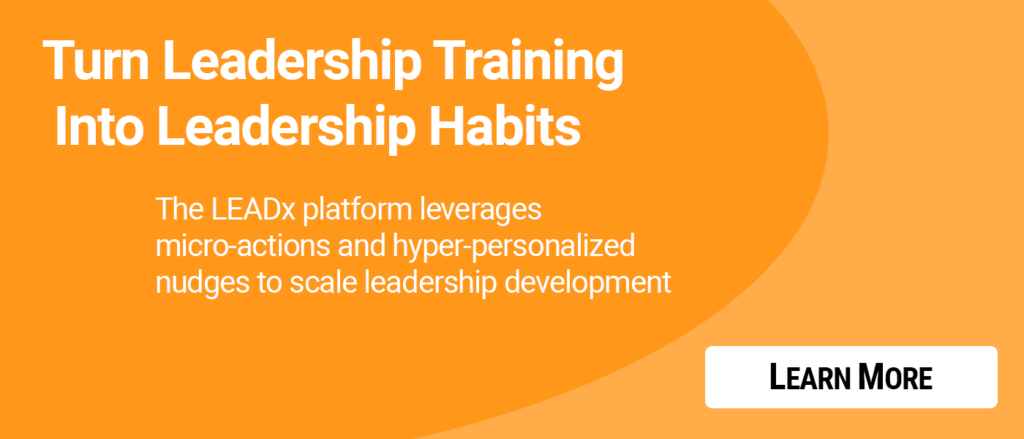
Diversity and inclusion have moved to the top of most organizations’ “to do” lists. However, in addition to a top-down approach, it’s critical to seed grass-roots initiatives as well. After all, individuals are the true purveyors of a company’s culture, and they can make or break how inclusive a team really is.
In her book, Better Allies: Everyday Actions to Create Inclusive, Engaging Workplaces, Karen Catlin shares how anyone can be an ally to their colleagues from underrepresented demographics. I recently had a chance to interview Catlin, a former tech executive who is now a highly sought after expert on workplace inclusion.
Kevin Kruse: You worked in tech for twenty-five years, building software products, and then became an advocate for inclusive workplaces. I realize that tech is notorious for its lack of diversity. Is that what made you shift your professional focus?
Karen Catlin: That’s right. While I was a vice president at Adobe, I felt a call-to-action to mentor, support, and sponsor women across the company. I loved doing that work so much that I decided I wanted to do it full-time, and not just at Adobe. So, I launched a leadership coaching practice focused on women working in the tech industry.
However, soon after starting my business, I realized I had a big problem. My clients were facing an issue that I couldn’t address through coaching: All were working in companies where the closer you got to the c-suite, the maler and paler it got. Clearly, these organizations were not true meritocracies where people get ahead based on their work and contributions to the business. That’s when I decided to focus on making workplaces everywhere more inclusive, not just for women like my clients but for employees who are members of any underrepresented group.
My first step was to create a Twitter handle, @betterallies, to share simple, everyday actions people could take. Through my tweeting, coupled with responses to my posts and interactions with others working in tech, I amassed many great examples of how allies act, or should act, in real workplace scenarios. And because they were far too good to let them fade into the Twitter twilight, I compiled them into my book, Better Allies.
Kruse: What’s the first step for anyone who wants to be a better ally at work?
Catlin: The first step is to take stock of your professional network. Most of us have “just like me networks,” which means we’re going to hire, promote, and offer other career-growing opportunities to people who are “just like us.” To diversify your network, spend time with colleagues who are members of underrepresented groups. If you’re working in a male-dominated field, this means getting to know women and non-binary individuals across your organization or industry. If your white and straight, spend more time with people of color and members of the LGBTQ+ community. Set up virtual coffees. Join employee resource groups (asking first if you’d be welcome). Attend conferences for people from underrepresented demographics. Follow a diversity of voices on social media. In all of these settings, you can get to know individuals from diverse backgrounds, hear about their experiences, and learn from them.
Kruse: We spend much of our day in meetings. Tell us about an example of an everyday action someone can take to be more inclusive in the meetings they attend.
Catlin: Meetings are often filled with non-inclusive behavior, such as interruptions, idea hijacking, misdirected questions, and housework tasks. I want more allies to pay attention to what’s happening in their meetings and take action. Notice someone being interrupted? Interject, and say, “I’d like to hear Emma finish her thought.” Hear someone repeating another person’s great idea and getting all the credit? Remind everyone who originated it, saying something like, “Great idea. Thanks to Willie for surfacing it earlier.” If a client is asking you questions instead of the most qualified woman in the room, redirect the conversation with a simple, “Deepa is the expert on that topic. Let’s hear from her.” If someone asks the only woman of color to take the minutes or track the action items, offer to do it yourself.
By amplifying and advocating for underrepresented colleagues in meetings, you’ll help ensure all voices are heard, with the added bonus of helping everyone know that they’re valued members of the team.
Kruse: I’ve read that women are over-mentored and under-sponsored. Is there a role an ally can play to change this dynamic?
Catlin: Allies can definitely sponsor women, as well as other marginalized individuals, with everyday actions. Here are five ideas.
Speak their name when they aren’t around. In her 2018 TEDWomen talk, which has been viewed over 3 million times, Carla Harris delivered an important message about meritocracy … or lack thereof. She debunked the myth that to get ahead, you just need to do great work and it will be recognized and rewarded. Instead, she points out that you need a sponsor who will speak your name when you’re not in the room. Someone who is invited to decision-making meetings and is willing to spend some of their hard-earned social capital advocating on your behalf. Someone who has your back. Allies can make sure they know coworkers from underrepresented groups so they can speak about them and their work when they’re not around.
Endorse them publicly. When I first joined Adobe, I noticed something interesting. My new manager, Digby Horner — who had been at Adobe for many years — said things in meetings along the lines of: “What I learned from Karen is the following …”. By doing this, Digby helped me build credibility with my new colleagues. His shout-outs made a difference and definitely made me feel great. He took action as an ally, using his position of privilege to endorse me publicly.
Sharing what you learned from someone is just one approach to vocally support coworkers to boost their standing and reputation. Take a minute to reflect on how you express your support today, and how you might do even more of it.
Invite them to high-profile meetings. It might be a strategic planning video session, an advisory council meeting, or virtual drinks with the recently hired executive. When we can safely gather again, it might be grabbing lunch with some VIP. The next time you’re attending one of these high-profile meetings, invite a coworker from an underrepresented group to join you. (If you think you need to make sure it’s okay to do so, by all means ask first.) Give them insight into the discussion while increasing their visibility with the people around the table.
Share their career goals with decision-makers. Professional goals can be wide-ranging. An international assignment? Getting to the next step on a job ladder or joining a different team to gain a certain kind of experience? Publishing an article for the company blog? Joining the board of a professional association?
Now, ask yourself if you’re familiar with the career goals of your colleagues from underrepresented groups. And how you’ll make sure you’re sharing them with influential people and decision-makers within your organization or industry.
Recommend them for stretch assignments and speaking opportunities. Skill-building projects and giving presentations are like multivitamins for a career. They can magnify one’s visibility within an organization, help increase confidence, enhance social networks, and build credibility. Ultimately, they can help someone be better positioned for a promotion.
The next time you need someone to stand in for you on a presentation or take on a high-profile assignment, reflect on your selection criteria. Do you tend to give this kind of work to certain people or certain types of people? What would it take to expand that pool? If you know only a few people who have the skills you value for these plum assignments, you might need to expand your network. Or figure out how more people, especially people outside your normal go-to list, can learn those skills.
Stretch assignments and speaking in public opens doors and ignites careers. Allies, it’s essential we find ways to spread that joy around.
Kruse: Any final words of advice to the would-be allies out there?
Catlin: Being an ally is a journey, and you don’t have to do it all at once. Start with a single act. While it may seem small, you’ll make a difference. You may even start a ripple effect, inspiring others across your organization to act as better allies.







